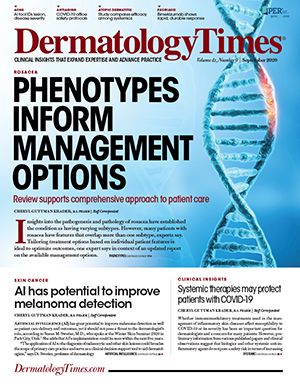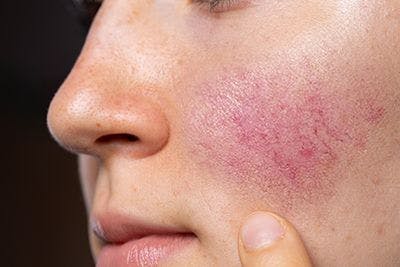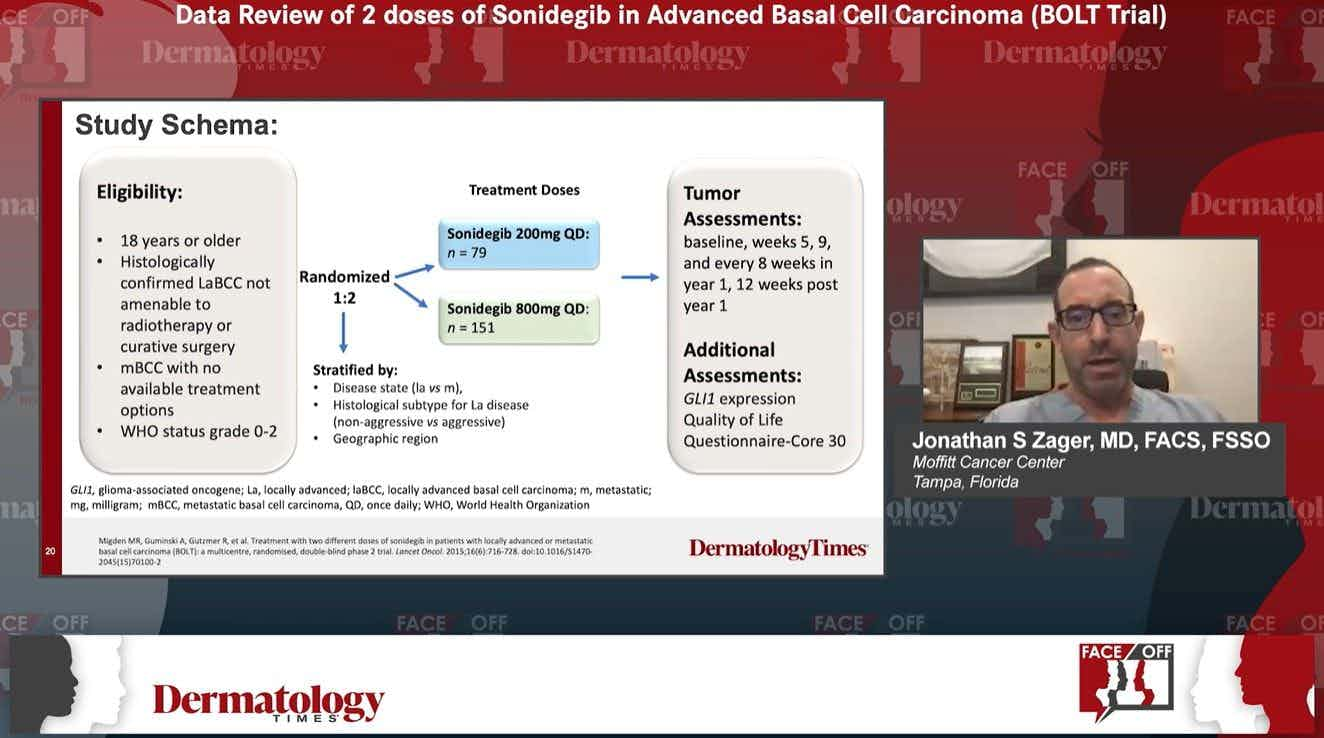- Acne
- Actinic Keratosis
- Aesthetics
- Alopecia
- Atopic Dermatitis
- Buy-and-Bill
- COVID-19
- Case-Based Roundtable
- Chronic Hand Eczema
- Chronic Spontaneous Urticaria
- Drug Watch
- Eczema
- General Dermatology
- Hidradenitis Suppurativa
- Melasma
- NP and PA
- Pediatric Dermatology
- Pigmentary Disorders
- Practice Management
- Precision Medicine and Biologics
- Prurigo Nodularis
- Psoriasis
- Psoriatic Arthritis
- Rare Disease
- Rosacea
- Skin Cancer
- Vitiligo
- Wound Care
Publication
Article
Dermatology Times
Collaboration makes progresses standards for implementing AI
Author(s):
The International Skin Imaging Collaboration is an academic and industry partnership designed to facilitate the clinical application of digital skin imaging, with an initial focus on melanoma. The group is developing standards for dermatologic imaging and building a public archive of clinical and dermoscopic images for use in developing artificial intelligence diagnostic algorithms.
Artificial intelligence (AI) offers multiple opportunities for improving the delivery of care in dermatology, but a lack of standards for dermatologic imaging has been a major reason why the development of AI for dermatology has lagged behind the progress occurring in other medical specialties.
The International Skin Imaging Collaboration (ISIC), which was organized in 2013, is addressing this obstacle in its effort to move the field forward and bring AI into dermatology practice. At the same time, practicing dermatologists can play a valuable role in the process by becoming active participants in AI design and implementation, says Allan C. Halpern, M.D.
Dr. Halpern is chief, dermatology service, Memorial Sloan-Kettering Cancer Center, New York, N.Y., and leads ISIC.
RELATED: Algorithm effectively evaluates acne severity
“ISIC is an academic and industry partnership being led by Memorial Sloan-Kettering Cancer Center that is designed to facilitate the clinical application of digital skin imaging,” Dr. Halpern explains.
“It is exciting that in a short time, the work being done by ISIC has led to the development of AI algorithms for image-based diagnosis that are able to outperform most dermatologists. But there is still a lot that needs to be done, and dermatologists can be important contributors to the ongoing evolution as we aim to promote the application of AI and make it as clinically useful as possible.”
Standardizing imaging
Although imaging of skin lesions would seem to be a “no brainer,” for a variety of reasons it is not something that has been routinely done in clinical practice. The situation has been changing, however, driven in part by patient demand for access to services and being particularly accelerated by the wider adoption of telemedicine as a means for delivering care during the COVID-19 pandemic.
ISIC was created based on recognition that in order to provide reliable information, AI algorithms need to be trained with good data. In terms of algorithms for image-based diagnosis, that means having a large set of quality images that are representative of the entire population and accurately annotated.
To address the existing gap in this area, ISIC set out to lay the groundwork for applying the Digital Imaging and Communication in Medicine (DICOM) metadata model to dermatology imaging.
“Without standards, images in dermatology will continue to find their way into electronic medical records without any quality assurance or systematic way for sharing,” Dr. Halpern says.
“DICOM standards provide both a quality check and interoperability.”
Thus far, a dermatology DICOM Working Group has developed consensus standards around techniques, technology, and terminology used for dermatologic imaging. The group has published multiple consensus standards pertaining to terminology that relate to clinical diagnosis, dermoscopic features, anatomic site, and more.
Algorithm development
ISIC is also building a public archive of clinical and dermoscopic images that can be used to train AI algorithms, and it has engaged the computer science community in algorithm development by holding annual lesion analysis challenges. Over the years, the challenges have become more and more complex as they have featured a growing number of images that are associated with more data and representing an increasing number of diagnoses. The challenges have also garnered the participation of a growing number of machine-learning lab teams, Dr. Halpern said.
Each challenge is hosted in partnership with a different imaging organization. The 2020 event, which took place in May 2020, was held in conjunction with the Society for Imaging Informatics in Medicine (SIIM), which is the premier professional organization for medical imaging. The challenge represented the first large scale interaction of dermatology AI with the rest of the medical computer imaging world, and for the first time, it used images with a DICOM wrapper, Dr. Halpern says.
“To date there have been hundreds of technical papers published from the annual challenges, and they are having a significant impact on developing new approaches to AI algorithms for dermatology,” he adds.
As it works towards optimizing the benefits of AI algorithms to support clinicians, ISIC is also investigating how the utility of the output is affected by the way it is presented. This question was explored in a recent study reported in Nature Medicine.1
The path forward
As Dr. Halpern and his ISIC colleagues continue working towards achieving their goals, they are looking to engage clinician cooperation.
“I invite anyone who has a large collection of images with accurate associated information to contribute the dataset to ISIC and participate as part of our organizing committee. In addition, there are increasing opportunities through ISIC for dermatologists to participate in studies that can help us understand the best ways to share AI insights with practicing clinicians,” he said.
In seeking to enlist help from the dermatology community in contributing toward AI design, testing, and implementation, Dr. Halpern emphasized that the benefits of AI in medicine are the product of a human-computer collaboration.
“AI has the potential to augment clinicians’ diagnostic capability and can bring multiple additional benefits. Dermatologists should not feel threatened by AI because it is not going to replace physicians,” he says.
Reference:
Tschandl, P., Rinner, C., Apalla, Z. et al. Human–computer collaboration for skin cancer recognition. Nat Med (2020).

Newsletter
Like what you’re reading? Subscribe to Dermatology Times for weekly updates on therapies, innovations, and real-world practice tips.






























